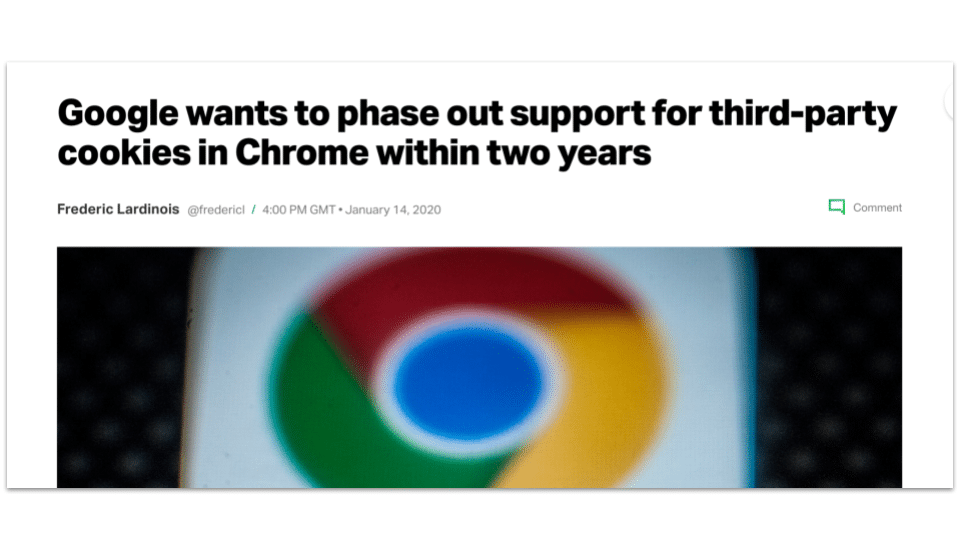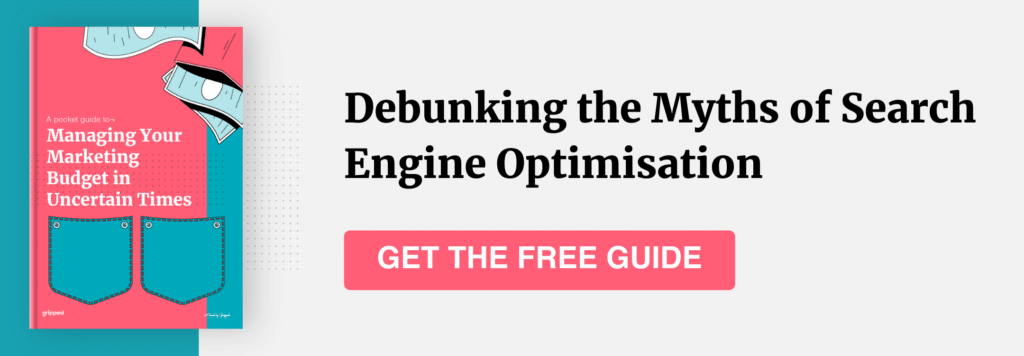Far from gooey centres and chocolate chips, modern-day cookies form a not-so-soft centre for marketing drives around the world, providing information about everything from login details to shopping behaviours, and ultimately opening the door for key processes including behavioural profiling and retargeting. Despite this, cookies and the user data they provide have become a controversial topic. One thing that’s never been disputed, however, is the crucial role cookies play in the marketing sphere.
But, just as you can choose between choc chip or triple choc in the shop, cookies aren’t a one-stop solution. There are two main contenders in the oven right now, both of them offering very different marketing benefits. To ensure online advertising success, marketers not only need to acknowledge these variations, but they also need to understand the ingredients that go into both — to help you achieve the perfect rise, we’re going to consider the difference between 1st and 3rd party cookies, and why exactly that matters to your business’s bottom line.
What are 1st party cookies?
Every time someone visits a website, a cookie is added to their web browser. These cookies, no matter their specific size, shape, or party, then get to work tracking users through the data that their online actions create.
The real differentiation lies in who is using that data, and what they intend to do with it. For instance, 1st party cookies (also known as HTTP cookies) work by providing information to the owner of the website in question. Such cookies are owned by the visited domain and are generally utilised to improve user performance while on that website. In this instance only the ‘first party’ has access to the information provided by said cookie, allowing for a private feast that, when you delve into the history of the net, is actually as old as HTTP itself.
How to use 1st party cookies
While 1st party cookies can still be used for specific marketing purposes (retargeting emails, etc.) their most common uses centre around improvements to user experience. Specifically, domain holders may wish to utilise 1st party cookies to:
- Remember past purchases
- Store shopping cart information
- Auto-fill forms
- Store language preferences
What are 3rd party cookies?
In direct contrast, 3rd party cookies are created when a script or tag is placed on a browser which then sends site data to a third party. This form of data collation has long been a marketing go-to, allowing marketers to better grasp consumer habits across websites for targeted advertising that’s far more likely to appeal.
As we’ll discuss in more detail later, third party cookies have come under significant fire in recent years, especially since GDPR made it mandatory to declare 3rd party cookies on every site accessed across Europe. Since then, more and more web browsers, including Safari and Firefox, have taken the decision to block third party cookies.
How to use 3rd party cookies
Unlike experience-centric 1st party cookies, third party cookies tend to be solely concerned with marketing, specifically with creating marketing experiences that are more likely to appeal to consumers and create conversions that companies can track. Marketers can especially utilise third party cookies to:
- Ensure targeted ads based on the sites visited in a session
- Streamlining live chat services
- Tracking traffic from social media, etc.
- Tailoring location-specific marketing
- And more
Google Privacy Sandbox and the future of cookies
The sometimes hidden nature of third party cookies, and the transfer of personal data in general, has become a pressing cause for controversy in recent years. Since GDPR was introduced, consumers have become especially concerned with better understanding the ways companies use their data and also restricting that data where possible.

As it stands just 5% of browsers block first-party cookies, but increasing concerns surrounding consumer privacy, alongside an upward trajectory in everything from online shopping to data breaches, has seen Safari and Firefox already implementing measures to block third-party cookies by default. The launch of Google’s Privacy Sandbox in the summer of 2020 is the first step towards Chrome browsers doing the same.
This move by perhaps the biggest platform for third party cookies might feel like a nail in the targeted marketing coffin, but Google certainly isn’t leaving marketers in the dust. Rather, the internet giant is facilitating change by urging marketers to adapt to marketing practices that continue to target ads, but through the use of privacy-respecting group data, rather than information collected on a granular level.
This is a goal that Google hopes to help marketers achieve by replacing traditional third party cookies with five proposed application programming interfaces, which are:
- Trust token API: An alternative to CAPTCHA that allows publishers to differentiate between humans and bots, but with a cryptic nature that prevents sites from being able to track users.
- Aggregated reporting API: A way to track views, impression, reach, and more without cross-site tracking users.
- Conversion measurement API: A signal that conversions have taken place, either through clicks or purchases.
- Federated Learning of Cohorts: An ML technique that makes it possible to form centralised models without exchanging data, ultimately grouping different sets of users to better understand consumer behaviour.
- The TURTLEDOVE proposal: A solution to retargeting that enables ad networks to segment groups based on certain actions e.g. abandoning a shopping cart containing a specific item.
Want to improve your content marketing strategy?
Download this FREE Guide to find how to create the best lead generating content to accelerate your business growth.
But, what does all of this mean for the future of cookies? Well, with Google predicting that these changes are set to phase third party cookies out for good by 2023, it’s not looking good. That said, an ongoing lack of restrictions on first party cookies means that this is by no means the end for the cookie monster. Rather, businesses could benefit from bringing granular data collation back in-house to provide the transparent and secure interactions that modern consumers so clearly value.
In terms of targeted advertising and consumer tracking, Google’s roadmap for the future certainly seems like it offers all the benefits that third party cookies have previously brought to the table, without any unpleasant consumer surprises along the way. Of course, all of this is very much in the development stage as it stands but, by the time 2023 rolls around and we find ourselves facing the predicted ‘death’ of third party cookies, marketers should be in a position to go from strength to strength regardless.
Cookies are critical to get right
Data and the ways that marketers use it is changing at an astounding rate and, while cookies remain at the centre of these focuses, the plain fact is that things are changing. As consumers become more aware of what cookies are, and what they mean for wider data privacy, companies looking to stay ahead need to make sure that they’re approaching with caution, and keeping consumer interests in mind by:
- Keeping policies transparent
- Restricting access to data
- Utilising group data rather than individual information
Google’s Privacy Sandbox should, in theory, open the door to all these benefits while ensuring that the death of third-party cookies doesn’t leave marketers or their efforts in the dust. What’s more, as third party cookies are phased-out, predictions suggest that generally trusted first-party cookies are set to take the helm, providing all-important consumer information without once crossing the line on what’s acceptable and what’s not where company data is concerned.
1st and 3rd Party Cookies FAQs
First-party cookies connect you to a single website. They hold on to some personal information to make the website easier to use.
Third-party cookies allow someone to track your shopping or other activity across the internet. Many browsers are dropping their features that allow third-party cookies to work.
First-party cookies are unlikely to go away because they're deemed essential for a website's performance and are consistently active.
Google has announced that it will stop the use of third-party cookies in Chrome by the end of 2023, joining a growing list of browsers ditching the notorious tracking technology.
Google has released the anticipated replacement for third-party cookies, named “Topics API,” just six months after ditching plans for its earlier cookie replacement — “Federated Learning of Cohorts” — or “FLoC” as it was commonly known.
First-party cookies (i.e. cookies on your website) that track basic data about your visitors are still uncontroversial. In an announcement from Google in 2021, they call first-party cookies "vital." So, ultimately, any first-party data you accumulate from your website's visitors on all browsers will still remain.

